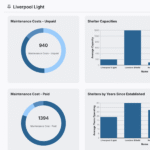Rephobia
Rephobia – Queen’s University Belfast student Liam Harte is using virtual reality to deliver accessible therapy for people living with phobias such as fear of flying, heights, or social situations. With potential applications in clinics, schools, and direct-to-consumer use, Rephobia aims to provide effective, affordable tools that help people build confidence and independence.
You have a business that aims to tackle phobias… Why did you pick this community to support?
I’ve lived with OCD myself, so I know what it’s like to feel trapped by fear. I built Rephobia to make high-quality phobia treatment accessible to anyone, not just those who can afford expensive therapy. It’s about turning fear into something beatable, not permanent.
You are using the developments in virtual reality to help people overcome their fears in a safe space. Tell us more about how this developed.
Development stemmed from my hands-on experience as a university VR researcher and grew fast. I realised virtual reality could create controlled exposure environments without needing to face real triggers. That spark became Rephobia – a therapist-led, science-backed way to help people tackle their fears head-on.
How has the quality of VR improved in recent times?
VR has levelled up massively. Today’s headsets are lighter, sharper, wireless, and far more immersive. That means therapy feels real without being overwhelming, and users can focus entirely on overcoming their fear. That’s a truly exciting element about VR – who knows how much more immersive it will be in 5 years, 3 years or even 12 months from now?
How do you monitor quality assurance and feedback from your clients?
Every session includes structured feedback from both clients and therapists. We monitor in-session engagement, emotional response, and post-session surveys to fine-tune every environment and ensure it actually works.
Are there any phobias that present a particular challenge to offering your service?
Certain phobias, like complex trauma-linked fears, need a slower, more personalised approach. These require deeper clinical involvement to ensure safety and trust are built at every stage.
Are there any plans to utilise other forms of technology, such as 3D or hologram technology?
Yes, absolutely. We’re exploring blending VR with mixed reality and haptics to make therapy even more lifelike. Future versions could use holographic and AI-driven elements to personalise exposure in real time.
How do you plan to promote your service? What will be the messaging?
Our messaging is simple: Fear isn’t forever. We’re promoting through partnerships with therapists, NHS networks, and digital campaigns that speak directly to young adults who want accessible mental health support. Our goal is to help phobia sufferers “Face Fear and Feel Freedom”.
With social agoraphobia on the rise amongst the young, how can you best serve this group?
Social agoraphobia is climbing fast among young people, particularly post-pandemic. With VR, we can recreate familiar real-world social settings like cafés, classrooms, or events and guide users through controlled exposure. It lets them rebuild social confidence in a safe, supported, and private space before stepping back into the real world.
As a technology-based business, what were the main challenges that you faced when starting up?
Getting a medical-grade product off the ground isn’t easy. Navigating regulations, funding, and building clinically sound VR environments is a steep climb. It’s a path we’re very much still on, but it’s a challenge that’s helped to provide Rephobia with a strong foundation.
Lastly, if you could develop your service, which phobia that you are currently not serving would you assist?
I’d love to tackle OCD-related fears next. They’re deeply personal and often overlooked, yet they affect millions. VR could offer a structured, therapist-led way to face intrusive fears safely, without real-world triggers, giving people back a sense of control.


